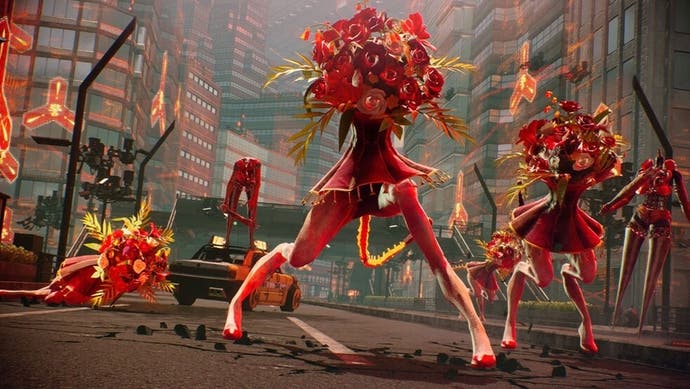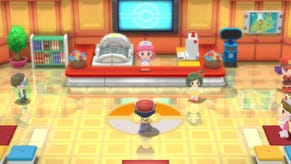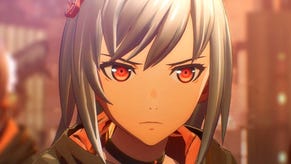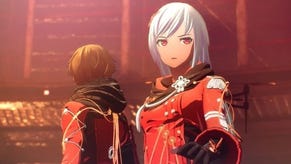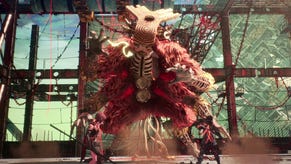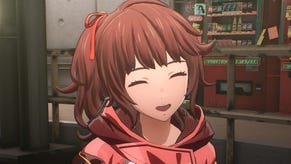Here's why Scarlet Nexus has disturbing flower bouquet monsters
Giant anemone crab.
When it comes to strange enemy designs, things surely can't get much weirder than Bandai Namco's upcoming action RPG Scarlet Nexus. Flowers with ostrich legs and stilettos, a slinky with human hands - it's all rather disturbing stuff. Kind of like that horrible spider doll from Toy Story.
Thankfully, the game's developers are here with some answers as to why these look so darn odd, as discussed in a recent Scarlet Nexus preview viewed by Eurogamer.
For context, the game is set in a technologically advanced society called New Himika - a country "so big that the concept of 'overseas' doesn't even exist," as art director Kouta Ochiai explained. This civilisation has developed based on technology surrounding the brain, with the populace using a form of brain-internet called the Psynet, while some use advanced brain power in the form of various psykinetic abilities. It's not all glamorous, however, as this world is frequently visited by "the Others": alien creatures without a consciousness that feed on human brains. Those are the flower bouquet things, if you hadn't guessed.
Those living in New Himuka have taken measures to deal with this, such as developing technology to essentially forecast where and when the Others will appear - and by sending in the Other Suppression Force (OSF) to deal with the pesky things. This is where you come in. Playing as new OSF recruit Yuito Sumeragi, you and your teammates are tasked with taking down the otherworldly monsters. As the story progresses, Sumeragi starts to wonder if fighting for the OSF is the right thing to do, and questions whether being constantly connected to his teammates' brains is healthy. I can't imagine wiring Twitter straight into your noggin would be a good idea, to be honest.
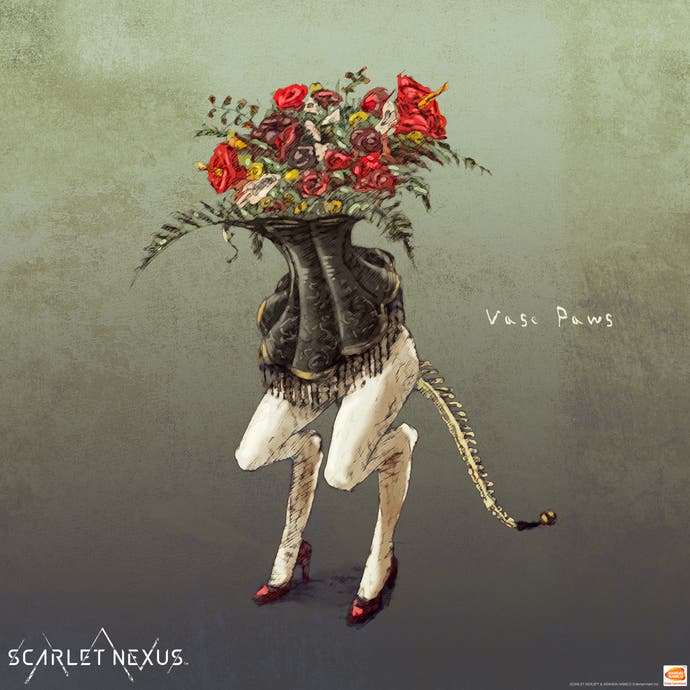
Anyway, back to the monster design: so why do these creatures look so strange? Well, in part it's because Bandai Namco enlisted the help of independent artist Masakazu Yamashiro, who's known for his disturbing illustrations combining animals with human features and metal objects.
"When we were designing the monsters, we wanted to make something new and unusual, and also things that people will [take] interest in," Ochiai explained. "That's when I thought of finding an independent artist to design the monsters for us, because we wanted to get a different perspective on values towards the game, in order to contribute to the foreignness factor."
"We added some grotesque elements to everyday items such as flowers and household appliances. We have a rule on the designs where we put organic things and inanimate objects together to create the Others. It also relates to the background of the Others which you can find out more [about] in the game. By combining the two things that seem to repel one another visually, we are able to effectively express to the players that the Others are the kind of incomprehensible creatures that are conceptually and mentally different from us humans."
"When I first saw [the Others] they really looked like animals," producer Keita Lizuka added. "But if you look closely you can see parts that are combined to construct them, such as plants, human and metallic parts. We cannot know if [they are] living or not."
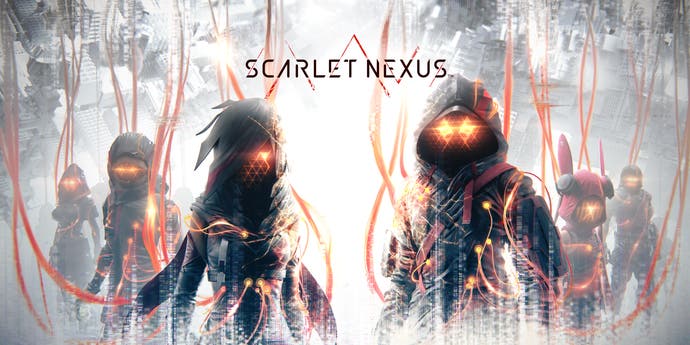
Well, that sort of clears things up - but what about the way in which you get rid of the Others? The gameplay is centred on using both a melee weapon and psychic powers: protagonist Sumeragi has a sword and telekinesis, for instance, while other teammates have combinations such as a staff and pyrokinesis. As Sumeragi is connected to his teammates, it's possible for the player to make use of other characters' special abilities, and you can pick and choose which characters are in your party for missions. Sumeragi's own abilities, meanwhile, can be upgraded using a "Brain Map" skill tree. The combat allows for a range of combination attacks, including (rather hilariously) the ability to repeatedly chuck cars at an enemy when downed, and it looks like Sumeragi can manipulate his environment to throw a surprisingly large range of objects.
It's hard to say what all this feels like to play, but I'm quite enamoured with the '90s Tokyo-inspired cityscape and the game's little retro touches, such as using digital numbers for floating damage. And, of course, there's the appeal of waving a sword around to leave neon lines across the screen like an electrified sparkler. It's certainly something to comfort you when facing a crocodile-lightbulb-gun thing.
